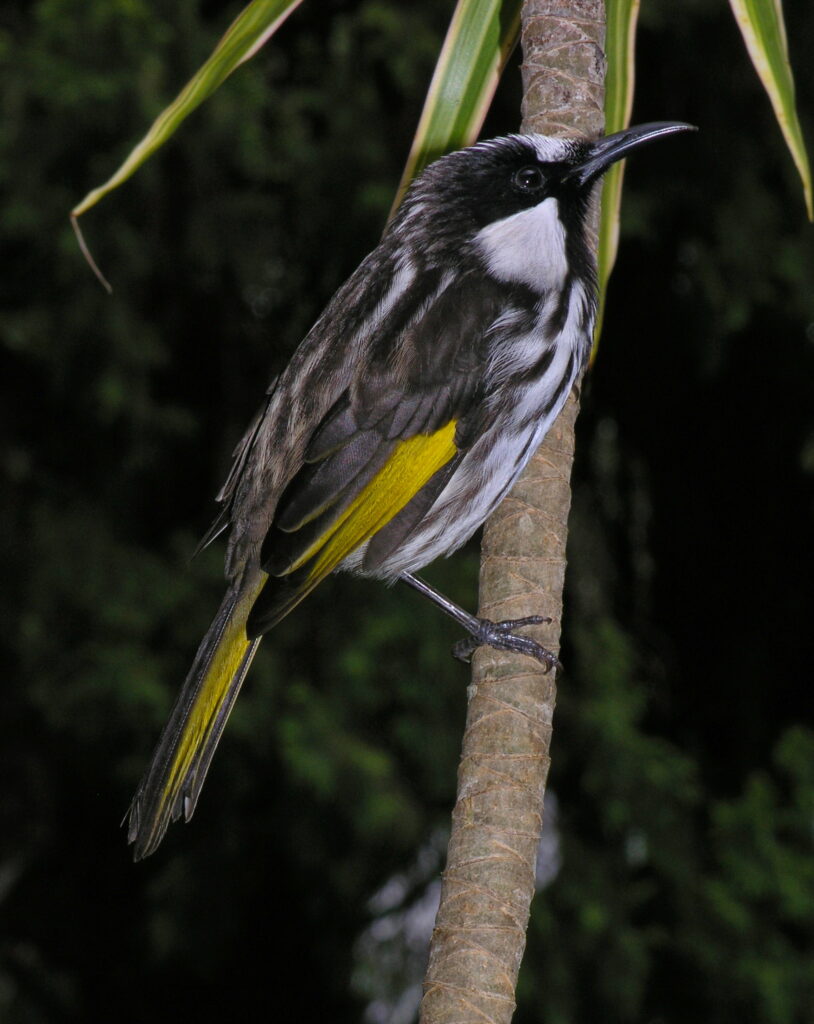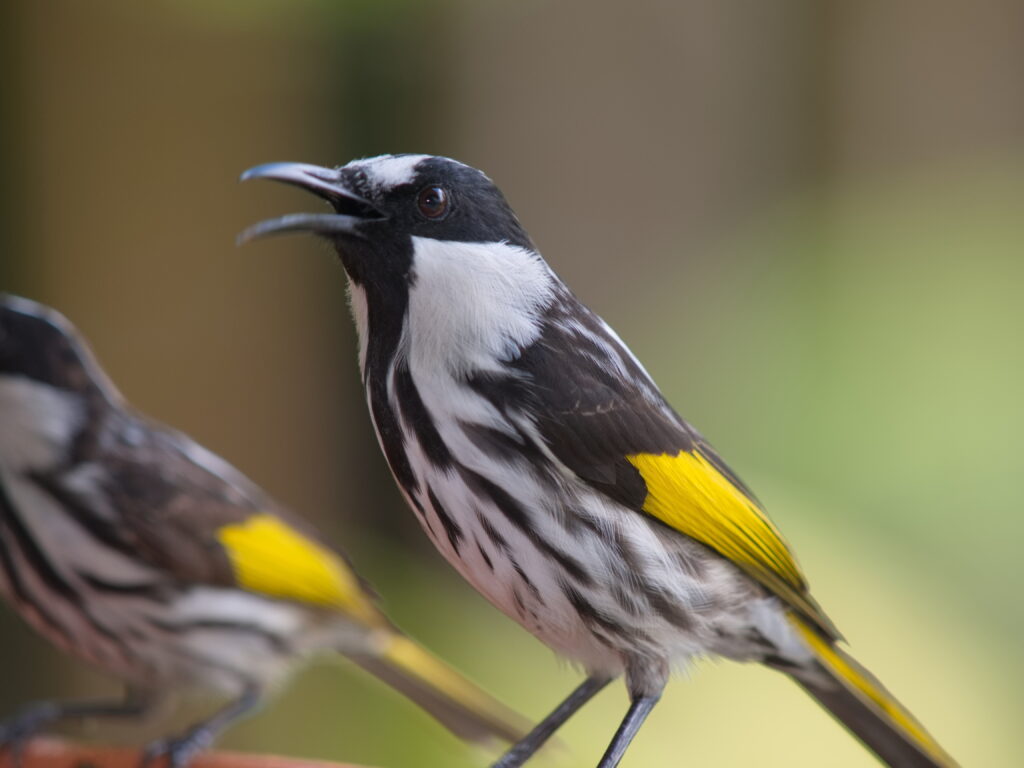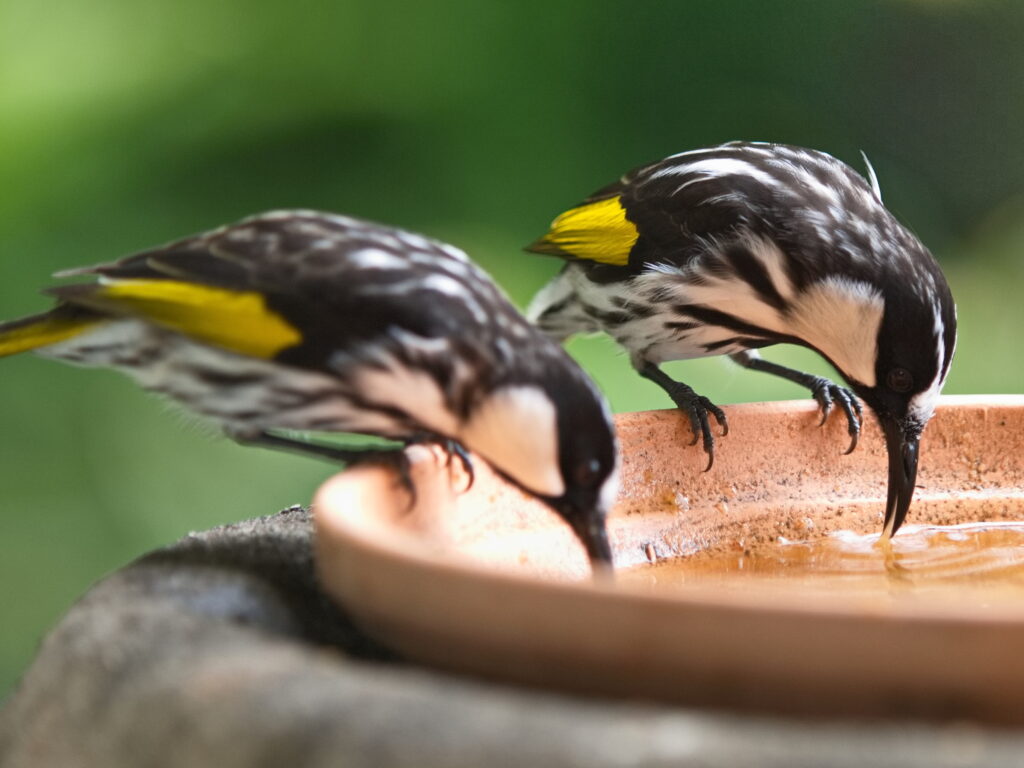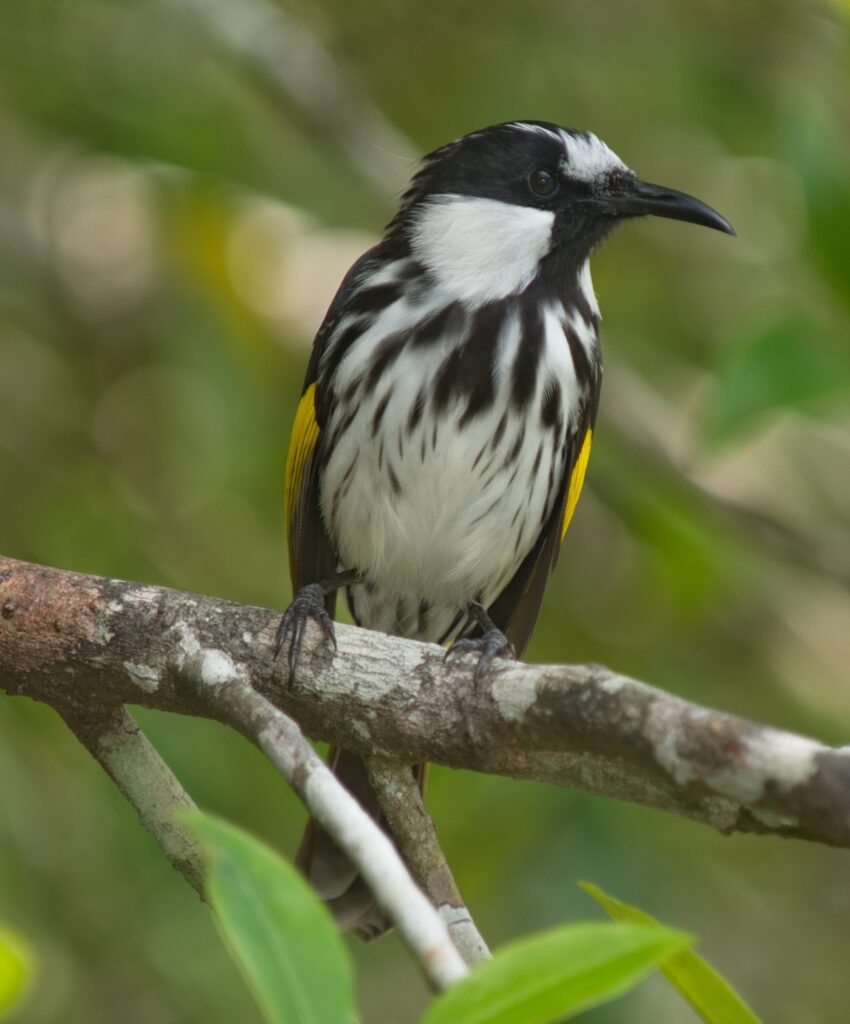While Paluma is best known for its montane rainforest, the village itself has quite substantial open cleared areas that support plants and animals that are more characteristic of open forest and heathlands. One of the birds that falls into this category is the White-cheeked honeyeater (Phylidonyris niger). It is one of the most common birds around the village, feeding on Calistemons, Banksias and Grevillias, but is mostly absent along the forested village tracks. This delightfully plumed, energetic, gregarious and vocal small bird always raises my spirits as it flits among the small trees and shrubs and trees in the front yards along the main road. As a scientist, I’ve been trained not to anthropomorphise, but I always get the feeling that they are cheeky and irrepressibly cheerful animals.


The White-cheeked honeyeater is an Australian endemic with two distinct populations (subspecies) in eastern and southwest Australia. Its plumage is unmistakable with its black head and eye patch, brilliant white cheek and forehead and yellow wing patch. Its principal habitat is open forests and wet heathlands where it feeds mainly on nectar-producing native plants with insects acting as a supplemental source of protein and other essential nutrients. In Paluma it can be a regular visitor to bird feeders that offer a bit of liquid from ripe fruit or commercial nectar substitutes. Despite its relatively small size, it can be quite fearless in chasing off other large honeyeaters, especially when part of a feeding group. I have had over 10 at my feeder on occasion.


Breeding can occur throughout the year with a peak in winter. Cup-shaped nests are built by the female in lower tree branches and shrubs as well as in grasses.
The White-cheeked honeyeater was first named in 1811 and placed in the genus that includes tree creepers. This miscategorization was remedied in 1830 by Renee Lesson who coined the genus name Phylidoneris from its (supposed) similarity to Friarbirds (genus Philemon) and Sunbirds (genus Cinnyris)
Text and Photos by Jamie Oliver

Very good to read detailed info about White cheeked honey eater especially from out here in the Gulf Country which is so dry.
No water in creeks and river beds and trees so spikey and vegetation so sparse.
The W C Honeyeater is often in garden at Possum @ Pumpkin cafe, and as you say is v competitive.
Lovely pics of the little charmer.